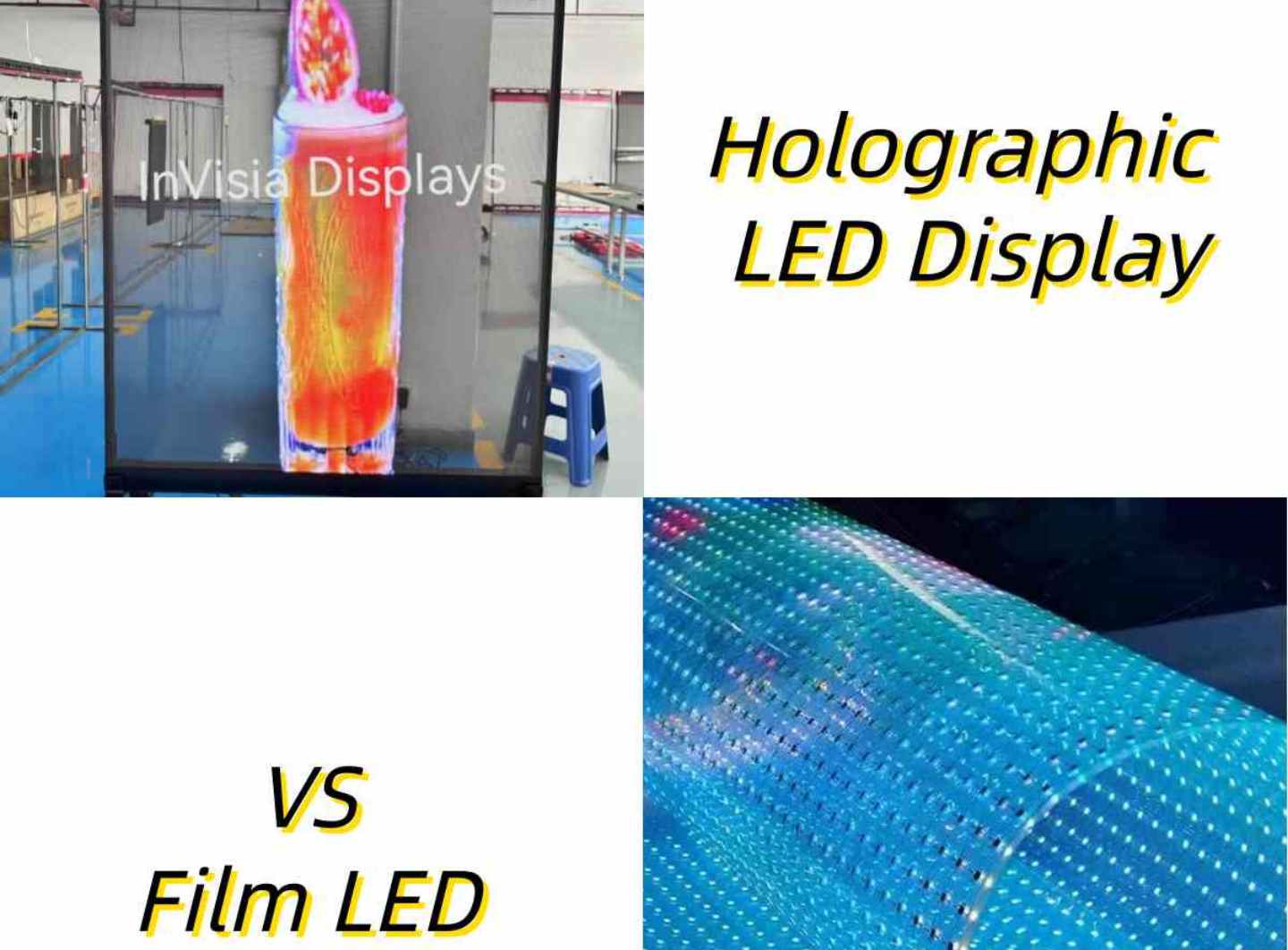Film LED VS Holographic LED Display: How to choose
Film LED or holographic LED display? It is often seen that people compare them. What are the differences between them? Only by understanding the key differences between these two types of displays can enterprises make better choices. Here’s a detailed comparison based on transparency, brightness, pixel pitch, heat dissipation, installation, weight, and maintenance.
Transparency and Contrast
Holographic LED display offers superior transparency and high contrast ratios, ensuring crisp and vivid imaging even in brightly lit environments. Its design allows more light to pass through,achieving up to 20% higher visual transparency compared to Film LED. This makes it an ideal solution for storefronts, museums, and high-end retail environments.
Film LED features lower transparency due to its adhesive film layer, which also reduces contrast. It works adequately in settings where moderate transparency is acceptable.
Brightness and Image Quality
Holographic LED display delivers higher brightness levels, typically around 3500 nits or even higher, making it suitable for both indoor and semi-outdoor applications. Its enhanced imaging capability provides sharper and more engaging content.
Film LED generally operates around 2000 nits, which may be sufficient in controlled lighting. Its lower brightness can be an advantage in settings where overly intense light is unnecessary.
Pixel Pitch and Resolution
Holographic LED display is now available with pixel pitches as fine as P2.9, offering high resolution and excellent detail even at close viewing distances.
While P4 are available to Film LED, the technology often comes at a higher cost—approximately 1.7 times more than holographic displays for the same specification. Film LED is more suitable for viewing from a distance.
Heat Dissipation
Holographic LED display designed with efficient heat dissipation, ensuring longer lifespan and consistent performance even during extended use.
Film LED suffers from poor heat dissipation due to the adhesive sealing layer. This can lead to overheating issues, potentially affecting reliability and durability.
Installation and Weight
Holographic LED display, lightweight and highly versatile, can be installed on glass, suspended from ceilings, or used in freestanding configurations. However, it cannot be curved or rolled.
Although heavier and typically glass-mounted, Film LED is rollable, offering unique advantages for carrying or special curved designs.
Maintenance and Durability
Holographic LED display is easy to maintain. Individual modules or LEDs can be replaced quickly without disrupting the entire display. This minimizes downtime and reduces long-term costs.
Maintenance of film LED display is challenging and time-consuming. Faulty LEDs require cutting through the adhesive layer for replacement, which can cause yellowing over time. This yellowing effect creates visible color differences between old and new sections, compromising visual consistency.
Application Scenario Comparison
Luxury Retail Storefront
- Holographic LED:
High transparency maintains visibility of displayed merchandise while adding dynamic digital content. High brightness ensures vibrant visuals even in sunlit environments.
Events & Exhibitions
- Film LED:
The only choice for curved or cylindrical installations due to its flexible nature. Also suitable for temporary floor or wall applications.
Conclusion: Choose Film LED or Holographic LED Display
Choose Holographic LED if: You need high brightness, superior transparency, and sharp image quality for applications such as storefronts, corporate buildings, or event stages. It is also preferable where long-term durability and ease of maintenance are important.
Consider Film LED if: Your project requires a rollable or retractable display, or will be used in environments where very high brightness is not necessary. It can be a practical solution for temporary installations or settings with space constraints.
Each technology serves different purposes. Holographic LED displays lead in transparency, brightness, and maintenance convenience for permanent, high-impact installations. Film LED displays, on the other hand, offer unique benefits like rollability and are adequate for lower-brightness environments.
Your choice should be guided by the specific requirements of your project—whether it’s for aesthetic impact, functional flexibility, or budget considerations.



